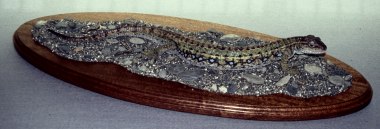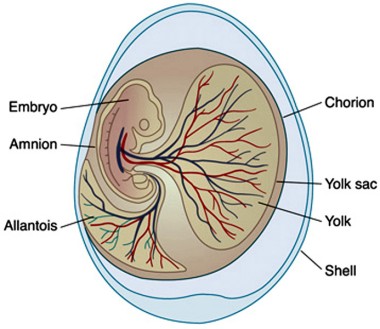| In 1988 in a quarry near Edinburgh a fossil of a small animal (20 cm)
was found showing the characteristics of a reptile. This fossil, however,
was 40 million years older than Hylonomus: it dates from the Lower
Carboniferous. It was named Lizzie the Lizard. It was a sensational find
and because of the fact that the owner intended to sell the fossil to the
highest bidder, a great campaign was organized to collect money to keep the
fossil in Great Britain. For a price of £195 000 it has found its place
in the National Museum of Scotland. Sad enough for the museum it is still
not quite certain that Lizzie is really a reptile.
Know more?
Evolution
of reptiles |
An exceptonally important event was the appearance of the so-called
amniotic egg. This is an egg in which the embryo is embedded
in (amniotic) fluid and is wrapped up in a membrane. There is also a second
membrane, called the allantois, in which blood vessels are situated for oxygen
supply and in which waste products are absorbed. Furthermore, the egg
has a hard, leathery shell which is not permeable for water but it is for
gas. The egg contains also a food stock in the yolk sac. Through this egg
the reptiles were independent of a watery environment. However, a form of
internal fertilization must develop because the egg must be fertilized in
the earliest phase before the development of the shell.
Probably this new trait was a reaction on predating of the eggs laid by other
animals. But how the evolution in this case exactly went, is difficult to
fathom.
Know more?
Structure of the amniotic egg |

